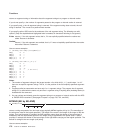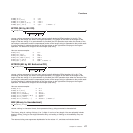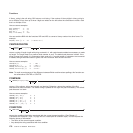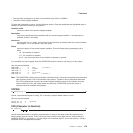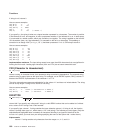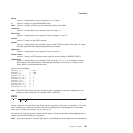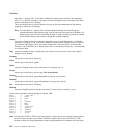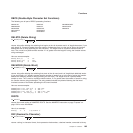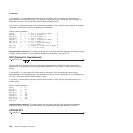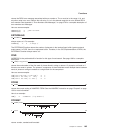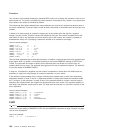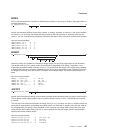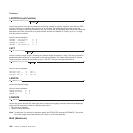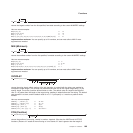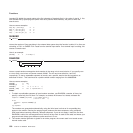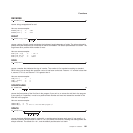
If you specify n, it is the length of the final result in characters; after conversion, the input string is
sign-extended to the required length. If the number is too big to fit into n characters, then the result is
truncated on the left. The n must be a positive whole number or zero.
If you omit n, wholenumber must be a positive whole number or zero, and the result length is as needed.
Therefore, the returned result has no leading '00'x characters.
Here are some examples:
D2C(9) -> ' ' /* '09'x is unprintable in EBCDIC */
D2C(129) -> 'a' /* '81'x is an EBCDIC 'a' */
D2C(129,1) -> 'a' /* '81'x is an EBCDIC 'a' */
D2C(129,2) -> ' a' /* '0081'x is EBCDIC ' a' */
D2C(257,1) -> ' ' /* '01'x is unprintable in EBCDIC */
D2C(-127,1) -> 'a' /* '81'x is EBCDIC 'a' */
D2C(-127,2) -> ' a' /* 'FF'x is unprintable EBCDIC; */
/* '81'x is EBCDIC 'a' */
D2C(-1,4) -> ' ' /* 'FFFFFFFF'x is unprintable in EBCDIC */
D2C(12,0) -> '' /* '' is a null string */
Implementation maximum: The output string may not have more than 250 significant characters, though
a longer result is possible if it has additional leading sign characters ('00'x and 'FF'x).
D2X (Decimal to Hexadecimal)
D2X(wholenumber
,n
)
returns a string, in character format, that represents wholenumber, a decimal number, converted to
hexadecimal. The returned string uses uppercase alphabetics for the values A–F and does not include
blanks.
If you specify n, it is the length of the final result in characters; after conversion the input string is
sign-extended to the required length. If the number is too big to fit into n characters, it is truncated on the
left. The n must be a positive whole number or zero.
If you omit n, wholenumber must be a positive whole number or zero, and the returned result has no
leading zeros.
Here are some examples:
D2X(9) -> '9'
D2X(129) -> '81'
D2X(129,1) -> '1'
D2X(129,2) -> '81'
D2X(129,4) -> '0081'
D2X(257,2) -> '01'
D2X(-127,2) -> '81'
D2X(-127,4) -> 'FF81'
D2X(12,0) -> ''
Implementation maximum: The output string may not have more than 500 significant hexadecimal
characters, though a longer result is possible if it has additional leading sign characters (0 and F).
ERRORTEXT
ERRORTEXT(n)
Functions
184
CICS TS for VSE/ESA: REXX Guide



